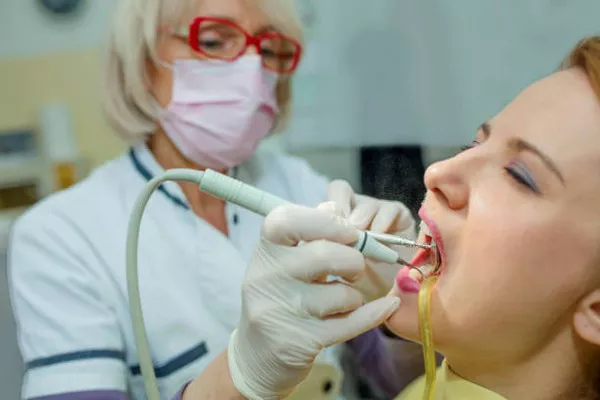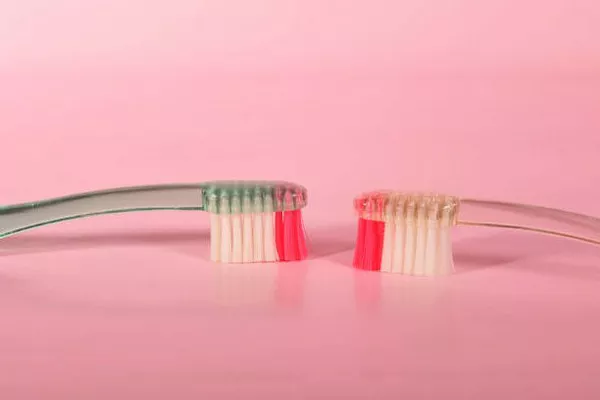Periodontitis is a progressive and potentially devastating form of gum disease that can result in tooth loss if left untreated. It is an inflammatory condition that affects the tissues surrounding and supporting the teeth, including the gums, ligaments, and bone. While periodontitis can be a challenging condition to manage, the good news is that it can be stopped if caught early enough and appropriate treatment is initiated. In this article, we will explore the causes and symptoms of periodontitis, as well as the treatments available to stop its progression.
Understanding Periodontitis
Periodontitis is a chronic infection that develops when bacterial plaque accumulates on the teeth and gums. The plaque hardens into tartar, which provides a conducive environment for bacteria to thrive and multiply. The immune system responds by releasing chemicals to fight off the infection, leading to inflammation and destruction of the supporting tissues around the teeth. Over time, this inflammation can cause the gum tissue to pull away from the teeth, forming pockets that become infected and deepen, ultimately leading to bone loss and tooth loss.
Causes of Periodontitis
The primary cause of periodontitis is poor oral hygiene. When dental plaque is not removed through regular brushing and flossing, it hardens into tartar that cannot be removed with regular brushing alone. Tartar buildup provides a fertile ground for bacteria to grow, leading to inflammation and infection of the gums. Other factors that can contribute to periodontitis include smoking, hormonal changes, certain medications, and genetic predisposition.
Smoking:
Smoking is one of the most significant risk factors for periodontitis. Smoking weakens the immune system, making it more difficult for the body to fight off infections, including those that cause periodontitis. Smokers are also more likely to have tartar buildup on their teeth, which increases their risk of developing periodontitis.
Hormonal changes:
Hormonal changes that occur during puberty, pregnancy, and menopause can increase the risk of developing periodontitis. These changes can cause the gums to become more sensitive and more susceptible to infection.
Medications:
Certain medications can also increase the risk of developing periodontitis. These include drugs used to treat high blood pressure, seizures, and cancer. These medications can cause dry mouth, which can lead to an increased risk of gum disease.
Genetic predisposition:
Some people are genetically predisposed to developing periodontitis. Studies have shown that individuals with a family history of periodontitis are more likely to develop the condition themselves.
Symptoms of Periodontitis
The symptoms of periodontitis can vary depending on the severity of the disease. In its early stages, periodontitis may present with mild symptoms such as redness, swelling, and bleeding of the gums during brushing or flossing. As the disease progresses, symptoms can become more severe and include bad breath, receding gums, loose teeth, and pus around the teeth and gums.
Early detection is critical in preventing the progression of periodontitis. If you notice any of these symptoms, it is essential to see your dentist promptly. Your dentist will perform a comprehensive oral exam and take x-rays to determine the extent of the damage. Based on this assessment, your dentist will recommend appropriate treatment options.
Treatment of Periodontitis
The treatment of periodontitis depends on the severity of the disease. In its early stages, periodontitis can be treated with non-surgical methods such as scaling and root planing. Scaling involves removing the plaque and tartar buildup from the teeth and gum line, while root planing involves smoothing out rough spots on the roots of the teeth to help prevent bacteria from sticking and causing further damage. Antibiotics may also be prescribed to help control the infection.
In more advanced cases of periodontitis, surgical intervention may be necessary. Surgery may involve procedures such as flap surgery, which involves lifting the gums to remove tartar deposits, or bone grafting, which involves replacing damaged bone with synthetic or natural materials. In some cases, tooth extraction may be necessary if the tooth is severely damaged.
Prevention of Periodontitis
Prevention is always the best approach when it comes to periodontitis. This includes practicing good oral hygiene by brushing twice a day, flossing daily, and scheduling regular dental check-ups and cleanings. It also means avoiding tobacco products, eating a healthy diet, and managing any underlying medical conditions that may contribute to periodontitis.
Good Oral Hygiene: Brushing your teeth twice a day and flossing daily are essential in preventing periodontitis. Brushing removes plaque and debris from the surfaces of your teeth, while flossing removes food particles from between your teeth and gums. Usin
Related Topics:



























